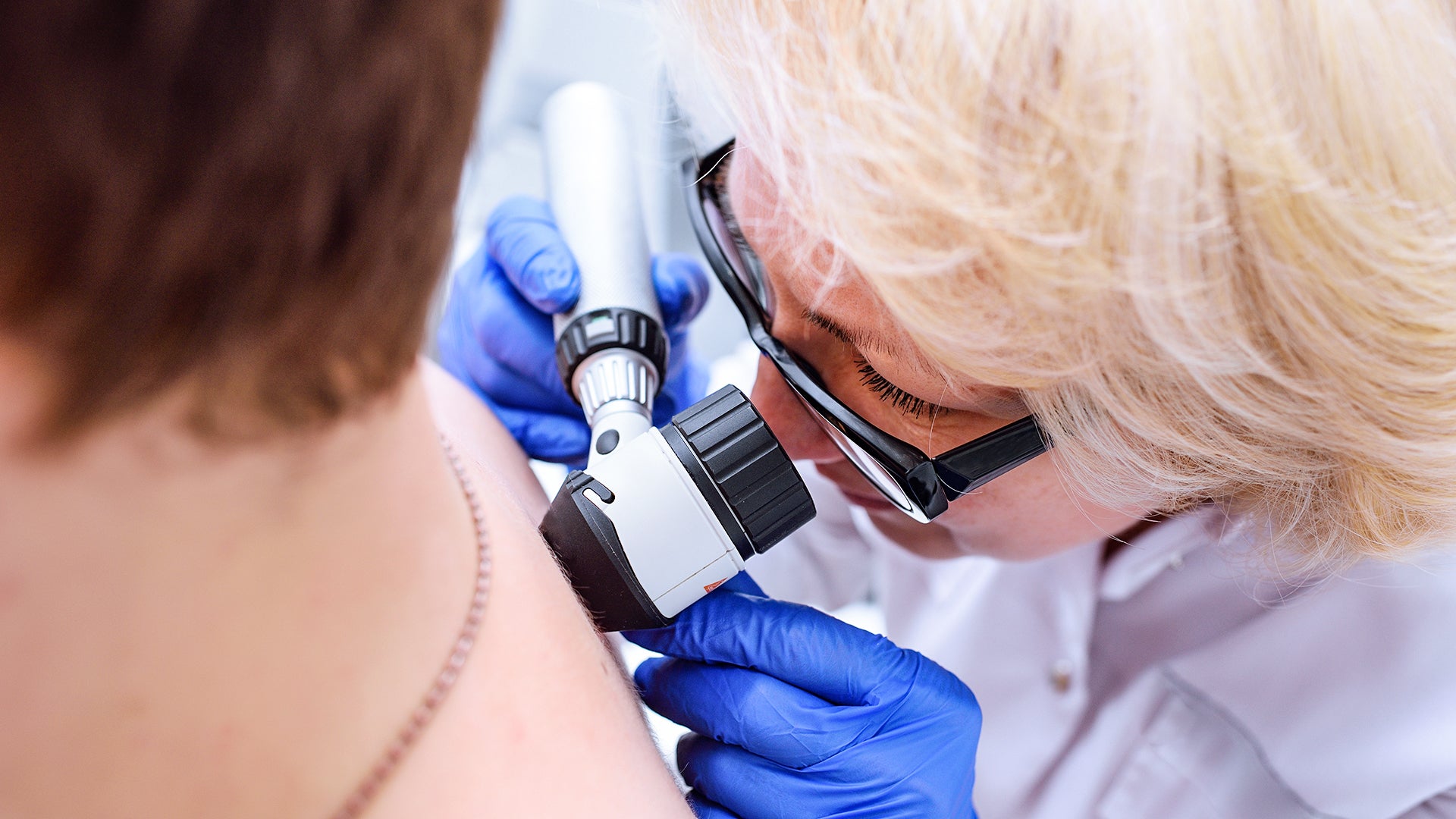
With Memorial Day, the unofficial start to summer, just around the corner, doctors are warning against getting too much sun exposure in the months ahead.
Skin cancer is the most common cancer in the United States. An estimated one in five Americans will develop skin cancer in their lifetime. There are three types of skin cancer. Basal cell carcinoma and squamous cell carcinoma are the two most common types and are rarely fatal.
Melanoma is the third type of skin cancer and is far more aggressive than the other two. While comprising less than two percent of all skin cancers, melanoma leads to most skin cancer deaths. That’s because melanoma is more likely to metastasize or spread to other parts of the body.
Melanoma usually begins as an abnormal mole, that if left untreated, can grow deep into the body and enter the lymphatic system or the blood stream, where it can travel to distant parts of the body and form new tumors in critical organs like the brain, liver, or lungs.
U.S. cases of melanoma have been steadily increasing over the last few decades, to about 100,000. Still, deaths have been on the decline, down to about eight percent of all melanoma cases, or approximately 8,000 deaths annually.
David M. Pariser, a dermatologist with Pariser Dermatology Specialists told CBN News if more patients understood how to recognize suspicious moles on their body, and if more people had regular, yearly, “mole checks” with a qualified, medical professional, more people would have problematic moles identified and treated before they metastasize.
“Early detection is actually the key,” he said. “Because if we can find every melanoma early, we can cure every melanoma. And what people need to do, is everybody needs to be aware of their moles.”
That means being able to tell the difference between a normal mole and an irregular one. One way to remember how to spot a suspicious mole is by becoming familiar with red flags, also known as the ABCDEs of melanoma.
- A-Asymmetry: Melanoma lesions are often irregular. One half looks different than the other half. Regular benign moles are usually symmetrical.
- B-Border: Typically, non-cancerous moles have smooth, even borders. Melanoma lesions usually have irregular borders that are difficult to define.
- C-Color: The presence of more than one color, such as blue, black, brown, or tan, or the uneven distribution of color can sometimes be a warning sign of melanoma.
- D-Diameter: Melanoma lesions are often greater than 6 millimeters in diameter, approximately the size of a pencil eraser.
- E-Evolution: If a mole has gone through recent changes in color, size, bleeding, or itching, this could be an indication of melanoma.
When a suspicious mole is identified, a doctor will likely perform a biopsy to determine whether it is melanoma. If it tests positive, the mole and some surrounding tissue is often surgically removed.
New York-based dermatologist Dr. Whitney Bowe told CBN News she’s passionate about sun protection for her patients, as well as for her own young daughter.
“UV exposure, and ultraviolet exposure from the sun’s rays is the number one preventable and avoidable cause of not only skin cancer, but also signs of aging, things like fine lines, wrinkles, brown spots, loss of elasticity,” she said. “Just one blistering sunburn during childhood or adolescence can actually double your risk of melanoma later in life.”
Dr. Bowe recommends using a broad-spectrum sunscreen, which protects against both UVA and UVB rays, that has a sun protection factor (SPF) of 30 or higher. There are two main types of sunscreens, mineral, and chemical.
“The FDA considers the mineral sunscreens as generally recognized as safe and effective, G-R-A-S-E,” Dr. Bowe explained. “But when it comes to the chemical sunscreens, they’re actually calling for sunscreen manufacturers to take a closer look at the safety of some of those ingredients.”
Studies show some ingredients in chemical sunscreens were absorbed into the bloodstream and need further evaluation to determine if they pose health risks. One ingredient in particular, oxybenzone, has been shown in studies in animals and in human cells in laboratories to interfere with how some hormones work. Because of these concerns, some chemical sunscreen manufacturers omit oxybenzone and other questionable ingredients. Chemical sunscreens absorb into the skin and then absorb UV rays, converting them into heat, and releasing them from the body.
Mineral sunscreens are actual physical blockers, acting as a shield. They sit on the surface of the skin and reflect UV rays. The key ingredients in mineral sunscreens are zinc oxide and titanium dioxide. They can leave a white cast on the skin and can be difficult to remove from the skin and clothing.
Most dermatologists say using any type of sunscreen is safer than not using one at all.
A survey conducted by the American Academy of Dermatology revealed many people do not use sunscreens correctly by, among other things, not using enough of the product, and not re-applying it often enough. Experts recommend using 1/2 teaspoon for the face and neck. If a person needs to put it on most of their body, such as when they are at the pool or the beach, an entire ounce is recommended. Sunscreen should be re-applied every two hours, or more often than that if the person is swimming or sweating.
Dermatologists recommend other forms of sun protection such as wide-brimmed hats, sunglasses, protective clothing, and shade, especially during the hours when the sun’s rays are the strongest, between the hours of 10:00 and 2:00.

